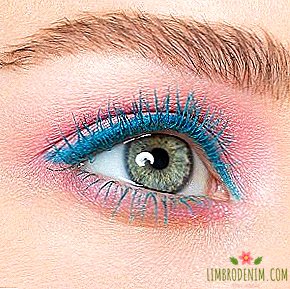The first marathon Katherine Schwitzer about the revolution in sports and races in 70 years
Today, few people know that fifty years ago any fan of running, in fact, was a rebel - there was no place for women or amateurs in this sport. If male enthusiasts running through Central Park of New York were simply considered freaks, then for women professionals distances of more than 800 meters were forbidden - running was considered unfeminine and dangerous for the health of girls. The situation changed in the 60s, in the midst of the struggle for human rights, thanks in large part to the legend of the epoch of Katherine Schwitzer, the first female marathoner. In 1967, Katherine fought back from the director of the Boston Marathon, who tried to force her to push her from a distance. The photo of this moment went around all the world publications, and Schwitzer subsequently became the face of the first marathon for women and the commentator of the first women's race at the 1984 Olympics.
In 2011, Katherine Schwitzer was included in the National Women's Hall of Fame for having made a “social revolution”, giving women around the world the opportunity to run, and with it self-reliance. September 22, on the eve of the Moscow Marathon, a documentary film by Pierre Morras about the beginning and development of the running movement “Running is Freedom” featuring Katherine Schwitzer is coming out in Russian hire. We had a unique opportunity to talk with the legend of sports about the development of running culture, the struggle of women for the right to be part of it, about physicality in sports and other important things.
Trailer for the documentary "Running is Freedom"
About the film and the birth of running movement
I was a frail, thin girl, and I could not get into the field hockey team. When I was twelve years old, my father advised me to start running: 1 mile (1.6 kilometers. - Approx. Ed.) a day - and maybe soon they will take me to the team. Later, I played both hockey and basketball, but the run remained in the first place. It was a real empowerment: I gained a sense of fearlessness. Running taught me to stand up to the challenge, and every day I grew stronger. I became a marathon for a simple reason: the longer I ran, the more I felt. The Boston Marathon, founded in 1897, was the most famous race in the world, not counting the Olympic Games. But, unlike the Olympics, it was open to anyone who wanted to try himself in a long-distance race. 26.2 miles run perspective (42 kilometers 195 meters. - Approx. Ed.) next to the greatest athletes I was fascinated. This is the uniqueness of running as a sport: you can't just go on the field and play baseball with the “New York Yankees”. However, when during my first race, Jock Semple tried to rip the number off my chest, it became obvious that the Boston Marathon was not open to everyone. Fortunately, the men running alongside furiously stood up for me and helped bring things to the end.
Since then, I ran the Boston Marathon eight times and finished second in the penultimate race. I won the New York Marathon. By today's standards, I am definitely a professional athlete. For a long time, I was very much in demand, but I did not earn money at the same time - at best, the organizers reimbursed the costs of participating in competitions. Previously, sports federations held runners with a deadly grip on payouts. There were other excellent athletes - Olympic champions, whose photos went around the front pages of all newspapers - and they also did not pay at all or were paid in secret. Manufacturers of sports shoes could offer the following scheme: run in Adidas - and get $ 500 for the first place, 400 - for the second, 300 - for the third. In general, for a long time the athletes were in despair. Therefore, the legendary Olympian Steve Prefonteyn was very active in support of running well paid.
The film "Running is Freedom" is not only about the limitations that athletes faced in the past, but also about our common victory. Over time, we managed to go beyond amateur sports: finally, athletes could choose where and how to run, and, moreover, make running a profession. When I was first offered to give an interview for the Morras film, which was ten years ago, I was skeptical. How many times I gave such interviews, and this did not end with anything - it never reached the time of issue to hire. The process of creating a movie - from the birth of an idea to the release of screens - is very complicated, expensive and time consuming, and I often say that only a “marathon runner” is able to bring this matter to the end. Director Pierre Morras is a marathon runner in the literal sense: he himself runs and is used to long distances. Maybe because the film turned out so good.
About women in big-time sports and sports journalism
What is happening in the race now is the result of a social revolution. Today, 58% of runners in the US are women. About 40 thousand women registered for the La Parisienne race, in which I participated a couple of weeks ago. France, Canada, Germany, Japan - in these countries, the running movement is gaining momentum every year. It used to be considered that running is not for girls: a woman should not exhaust herself, a woman should not sweat, a woman should not and should not. When I asked what was so unsuitable for running, opponents, as a rule, had no explanation. Have you seen the women's marathon in Rio this year? It was divinely beautiful. In professional and amateur running, we have already gone through a stage of sexism, and men are used to the fact that women overtake them in mixed races. Of course, the popularity of sports does not always determine gender. People will rather watch the broadcast of competitions in men's gymnastics, than the marathon - many people find this discipline too long and boring to watch.
Previously, women in the sport was extremely difficult, and the older generation remembers this very well. All my life I've been doing sports journalism. Forty years ago it was not enough to attend the race - you had to be able to write about it: this way we told the world about our movement and at the same time expressed ourselves. And if at first it was interesting to me to just write about running, over time my activity took on an organizational character. In addition, I began to comment on the races. Among my friends were football, hockey commentators - in general, women who surveyed the traditionally "male" sports - and it was more difficult for them than me. After the matches, the male reporters took exclusive interviews from the dressing room at the athletes, and the women had to wait for the players to come out. From the dressing rooms, the athletes went straight to the shower, and then to a press conference, so they had to fight for quality materials.
In professional and amateur running, we have already passed the stage of sexism, and men are used to the fact that women overtake them in mixed races.
Now women in the US are actively working as reporters at major football competitions. Their function is not always limited to interviews in the breaks between the periods and the review of matches in the studio - some girls become commentators. True, getting into this position is more difficult: our commentators often turn out to be former players who have been trained, and, of course, the overwhelming majority are men. At Syracuse University, where I studied, one of the best schools of journalism in the United States. There, as in other universities in the country - Columbia, Portland, University of Missouri - there are more women among sports journalists and their performance is higher (there are more men than sports management schools - many guys dream of becoming sports agents). In countries where women in sports journalism are not yet in such strong positions, they certainly need to defend their profession, but it is better to “infiltrate” gradually, without aggression.
It must be admitted that there are still many prejudices in the world. By signing a story about football in the name of Mary Kate Jones, you understand that readers may feel biased about information, but MK Jones is a different matter. When I registered for the Boston Marathon, I indicated my initials KV, as I used to do in the university newspaper. By signing texts with initials, I wanted to give them credibility - I will not hide it. But it's not just sex: it seems to me, "JD Salinger" sounds more powerful than "Jerry Salinger". However, it would be interesting to ask the same question to Joanne Rowling, the richest woman in Britain. In general, it would be good for all of us to stop thinking about “male” and “female” and just could do our work without hindrance.
↑ Katherine Schwitzer at the finish line of the New York Marathon, 1974
On the popularization of running and pressure on athletes
Now running is a global trend, and it seems to me that this is great in all respects (or almost all). Of course, when you grow up, at times it seems that before it was better. Someone from the pioneers of the running movement may say that the romance has left this sport, but then we look at the photos of our first races together and laugh heartily. Well, the clothes were on us! The sports form of those times was not very convenient. I absolutely did not like shorts, and I decided to run in short skirts. Many women did not run simply because there were no sports bras. I must say, the perfect sports bra has not yet been invented, but already what is on the market today gives women with large breasts the opportunity to play sports comfortably.
The progress of science needs to say thank you for sports drinks. Someone will say that there is enough water in the marathons. But new drinks with complexes of vitamins and minerals really help to recover faster. Now the marathon runners do not fall at the finish line, they do not tear after the race - they simply do not get to such a degree of dehydration. Modern sports shoes are also a phenomenal product. Earlier, by the end of the marathon, my legs were erased in the blood, and now I can run at least half the distance in the new sneakers without damage. So the development of the sports industry is clearly not the end of an era or a farewell to romance. This is progress. Now I run Reebok, and I have to say, sign my first contract with a sportswear brand at sixty-nine years old - an unusual experience.
Athletes from Kenya or Ethiopia need to earn at every race: a victory will provide an opportunity to create a small farm to feed their families, or to build a water supply system in their native village
At some point, a huge amount of goods appeared around the run. I try to go jogging light: in addition to T-shirts and shorts, I can only wear the most ordinary watches to know when it's time to go back. But fitness trackers, special glasses, or a huge bottle of water on a forty-minute jog are useless. But my neighbor thinks and acts differently. My husband and I (Roger Robinson, marathon runner and sports journalist. - Ed.) usually we tease his gear, and every time he gets offended and angry! Now everyone gives birth to several changes of sportswear and sneakers. But if expensive shorts or new glasses motivate you to get off the couch and go for a run - great, all means are good. In promoting the running movement, it’s not the profit of sportswear brands that bothers me, but the system of payments to athletes. This, of course, is not at all those amounts that get players or tennis players. In addition, for the whole year it is possible to run only a couple of marathons - to run every weekend, alas, will not work. At the same time, athletes show high results for the entire 5-8 years.
Since the significant reward for long-distance running is extremely difficult to achieve, athletes, especially from developing countries (Kenya, Ethiopia), find themselves in a position where they need to earn at any cost at every race. And not because they need a new car, but because many people depend on their achievements: victory will provide an opportunity to create a small farm to feed the family, or to build a water supply system in their native village. On this basis, the illicit drugs are a great temptation. Agents put pressure on athletes, and even those who would not use dope eventually give up. The legendary cyclist Lance Armstrong spoke about this more than once. Running is able to change people's lives, and money, too, but I am very concerned when the industry takes on such forms and puts athletes in a dangerous position.
On social projects and how running changes society
Running is a very personal way of transformation. This is a single sport that does not require additional equipment and leaves you alone with you, even when you are competing with others. Perhaps that is why for women of the whole world, running has become an opportunity to believe in herself, and by believing in herself, a woman can change the world - and that scares many. Last year, I created a fund called 261 Fearless — it was named after a number that they tried so hard to take from me during the Boston Marathon. This is a running community in which women, who have already gained the opportunity to assert their rights, through various activities and social networking support women who find themselves in a more difficult situation, including in developing countries, where this is especially necessary.
Take a look at the example of Kenya. In this country, women's rights are neglected, and gender inequalities are overlaid with problems of a general nature, such as lack of drinking water. Local girls are forced to walk for miles, carrying tubs of water on their heads to their native village. Only in the 90s women in Kenya began to run, and now athletes who earn money at international competitions, invest these resources in the development of their villages: build wells, purify water, open schools. Fifty years ago, no one could imagine that this was possible. After the Boston Marathon, everyone kept saying that I was just an exception and women would not start running, and today my organization 261 Fearless is planning plans to support women in the Middle East. When I was offered a foundation, I was 68 years old. It seemed to me that I was too old for this, but my like-minded people were adamant. I promised them that I would give this case a few years, and then I would go to clean up my house, take care of the garden, write a new book and spend time with my husband. But whenever you manage to achieve something in life, you look ahead and understand how much more to do.
↑ First Avon International Running Circuit in Atlanta, 1998
About physicality and age in sports
When I started to run, I looked very attractive: long legs, flowing hair, lipstick, eyeliner. This is partly why I was photographed so much. At that time, it was thought that only masculine women could be athletes and professional sport irreversibly changes the female body. For me it was important to attract as many women as possible to run. Housewives saw my photos in the newspapers and thought: “She doesn’t look like a man, so I can start running.” Nevertheless, in sports, I really appreciate the variety of bodies - female and male. Take a look at the runner Tirunesh Dibabu - what an elegant, petite girl. And the growth of the New Zealand pusher Valerie Adams is 198 centimeters, and she also has a completely divine body. When I see her, a comparison with Juno comes to mind. The great swimmer Michael Phelps is a miracle of nature: his gigantic arms and legs cut through the water so powerfully. Any type of figure is beautiful, and it is visible when the body is in motion. I am happy that society is going to accept diversity in appearance.
In my opinion, you should not feel too sorry for yourself and your body. If life gives you opportunities, use them - use it or lose it. I am seventy years old, and now I am preparing for the Boston Marathon, which will be held in April next year. Of course, I feel differently than at the age of twenty, but even at forty I was actively competing and now I am fully capable of running long distances. Running strengthens joints and helps maintain a healthy weight in children and adults. However, I do not advise parents to incline children to run for long distances - excessive stress can disrupt the natural process of bone growth. But physical education at school and mobile leisure is an absolute necessity.
The body does not lie: be attentive to your body - and it will tell you when to give everything one hundred percent or, on the contrary, to pause. In addition, the body is perfectly restored, if you give it time and rest. Of course, running can not do without injuries, but this is not the most dangerous sport. Have you seen head injuries among boxers or American football players? In general, even if you run often, a lot and quickly, but allow the body to recover, I think you are ensuring good health for yourself. In the end, no effort will be made. Stress - recovery, stress - recovery: this is how the body and personality is formed.
Photo: Kathrine Switzer, AP / East News







